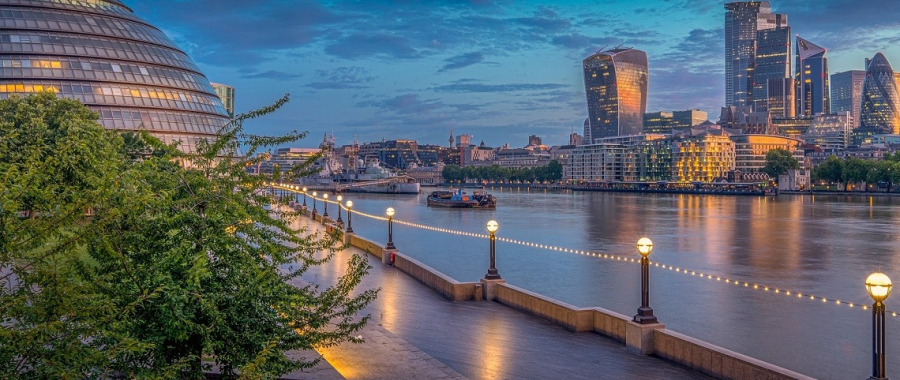Cut Through the Noise with Sound Advice for Environmental Noise Monitoring
Noise is one of the most widespread environmental pollutants that can cause a number of health issues. In various industries, including rail, it is important to monitor and control environmental noise to ensure noise levels in commercial, industrial and transportation settings comply with the recommendations set by the World Health Organisation (WHO).
With a degree in Sound Engineering and previous experience as an acoustic consultant in Argentina, SOCOTEC’s acoustic consultant for Built Environment, Guillermo Tomac, discusses the details of noise control in the rail environment.
Importance of environmental noise
Environmental noise can cover a number of definitions. Industrial noise and noise from transport are perhaps the most recognised, but it also covers unwanted sounds in the vicinity of homes, as well as noise coming from domestic premises. Often, though, environmental noise can be made up from a combination of many sources.
Noise is an underestimated risk that can affect the health and well-being of those exposed to excessive noise levels, including sleep disturbance, cardiovascular effects, poor work performance and hearing impairments. Monitoring noise levels at work, as well as noise exposure to the wider community, is important for clients to ensure a safe environment for all involved.
Noise assessments can be required for a number of reasons such as supporting planning applications, demonstrating compliance with a Planning Condition, or in response to a noise complaint. With the latter, an added complication is that noise is subjective. Environmental noise, or nuisance noise, depends purely on those exposed to the noise levels and their reaction to it.
Noise on rail
The day-to-day running of the railway creates unavoidable noise, on both freight and passenger trains. Running train engines, and the sound of wheels turning on the running rails, are probably the most obvious causes of noise on the operational railway. Train horns, alarms, level crossings, and other forms of noise used for communicating and warning give further examples of noise generation within the rail environment. Determining noise levels in these environments must be in line with the guidance laid out by the BS 7445: 2003 Description and measurement of environmental noise,which describes basic procedures for the determination of noise in community environments.
Rail maintenance and construction work will also cause noise, and vibration, in some locations. Major UK rail projects, including the likes of HS2 and Crossrail, will all require environmental noise and ground-borne vibration monitoring to help mitigate the effects of the project. The organisations involved must demonstrate their compliance with boundary planning consent levels; BS 5228-1: 2009 Code of Practice for noise and vibration control on construction and open sitesrecommends methods to control noise by predicting and measuring noise and vibration. This is where SOCOTEC steps in with our noise monitoring service to help compliance with environmental regulations and provide data for planning permission purposes.
Monitoring and measuring
In order to assess environmental noise, monitoring needs to be carried out at the closest Noise Sensitive Receptor location – that is, the area most likely to be affected by noise activity in the rail environment. The measurements for this need to be:
- 5 metres away from the closest façade of residential properties at 1.5 metres high
- If measurements are required to be performed at first floor level, the meter should be placed 1 metre away of the closest window facing the noisy activity
The units used to describe time-varying noise sources are LAeq, LA90, LAmax and LAmin, all expressed in the logarithmic decibel (dB) scale. During the monitoring period, these parameters are recorded.
LAeq is the average sound pressure level during the monitoring period and is used to assess the noise source (i.e. noise from passing trains or construction works taking place in the railway environment). On the other hand, LA90 is commonly used to describe background noise levels at the Noise Sensitive Receptors. LAmax and LAmin are the maximum and minimum levels during the period, respectively. Other parameters are used to describe impulsive noise (peak levels) and road traffic noise.
Depending on the type of works, the duration of noise assessments can vary. At a single location, attended monitoring could last anywhere from one hour to a whole day and allows us to have a true representation of the noise climate at that location. Unattended monitoring is also a possibility, with the ability to access the recorded data remotely. For longer projects, continuous monitoring can last for duration of two or three years – which would require remote data access, as well as setting up an SMS trigger alert system. With this, SOCOTEC's data system sends SMS or emails when pre-determined trigger levels are exceeded, allowing close monitoring and control.
Quality equipment for quality results
Using the latest, high specification instrumentation gives me a better a chance to accurately determine noise levels. At SOCOTEC, we have Class 1 precision Sound Level Meters which measure real time octave and one-third octave band frequency, as well as narrow band analysers and digital recording systems for identifying specific noise sources. Hand-held anemometers are another useful piece of instrumentation for recording local wind speed and wind direction. For long-term projects, weather stations are installed next to the fixed Sound Level Meters. To get the most accurate reading, SOCOTEC’s environmental scientists ensure the meters are correctly placed and calibrated. Both the Sound Level Meter Class 1 and Sound Calibrator Class 1 comply with all the relevant standards.
Noise mapping
When considering the noise aspects of a new development, maintenance depot or railway line, or modifications to an existing railway line, it is usually necessary to predict the new noise climate for comparison with the current situation. By predicting noise from potential construction sites and variation of railway noise, it can determine the degree of potential noise nuisance. SOCOTEC use the latest software to undertake complex calculations associated with environmental noise propagation, indicated by the image below.
Noise in context
By observing noise sources, possible future actions and control measures can be put into place. It is also important to observe noise sources to exclude any extraneous noises that are not related to the measurement, to ensure our reports back to the client are accurate for their purposes and requirements. For example, the context of sound is important because an infrequent sound may be recorded as having the same level of impact as a continuous sound, which is not always representative of the whole case.
Likewise, background noise monitoring should also be carried out during sensitive periods, such as evenings, nights and weekends. These time periods are when people are resting at home and the lower road traffic noise reduces considerably background noise levels. Furthermore, essential maintenance works of the railway environment usually take place during nights to avoid any disruption of the normal service so it is important to monitor levels during these sensitive periods to avoid any adverse effects on residents.
By monitoring and assessing environmental noise, SOCOTEC can issue fully-comprehensive reports of all measurements taken, interpreted against current legislation and guidance. Where necessary, advice and recommendations can be given including immediate actions to control noise nuisance, and possible control measures to reduce noise complaints.






Add new comment